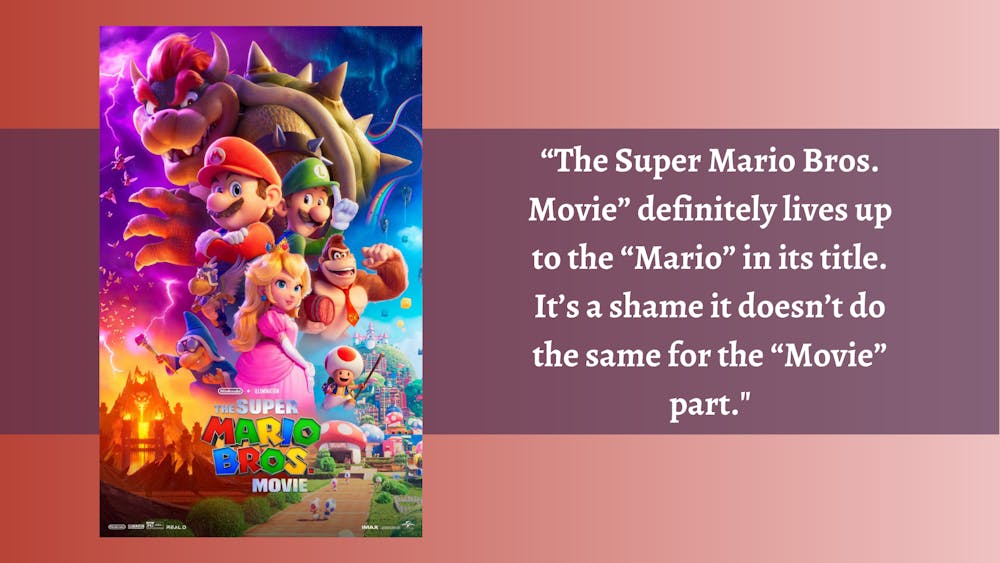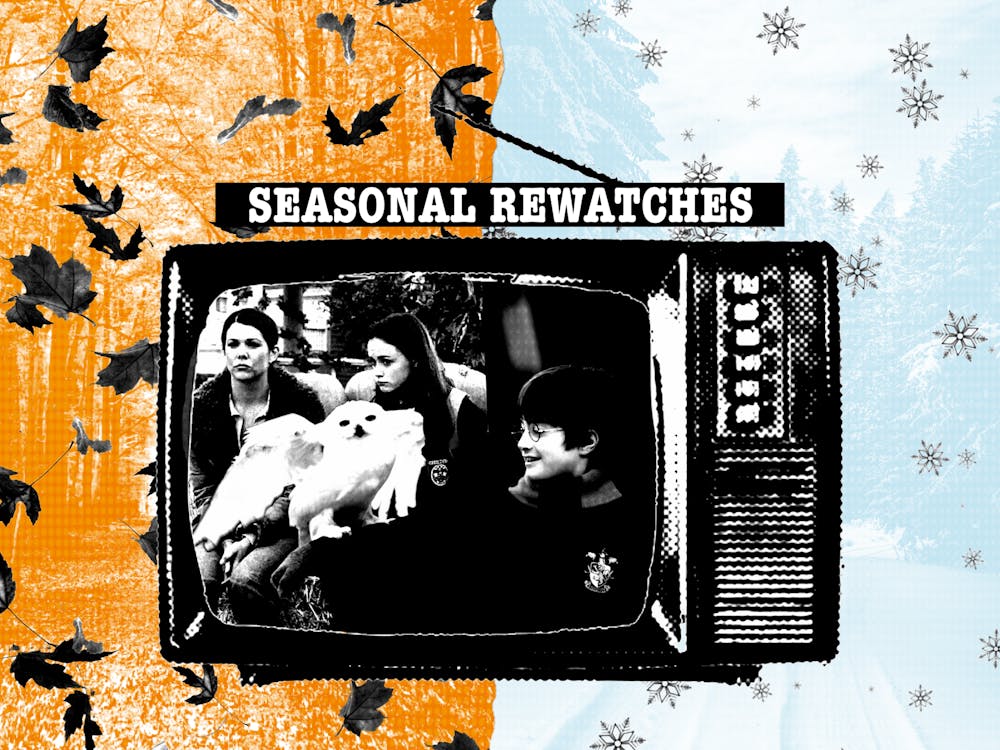In 1986, Nintendo released the Nintendo Entertainment System (NES), selling 62 million units worldwide and bringing the characters Mario and his brother Luigi to fame through one of its staple games, “Super Mario Bros.”
Although Mario had been in two games before — “Mario Bros” and “Donkey Kong,” then known by the name Jumpman — his appearance on the NES helped propel him to becoming one of gaming history’s most iconic characters.
In 1993, the video game graced the silver screen for the first time as a poorly-received live-action adaptation. The film, starring Bob Hoskins and John Leguizamo as the titular brothers placed into a dystopian Mushroom Kingdom, was a complete failure, with its edginess and detachment from Nintendo earning it a reputation as one of the worst movies of all time.
Thirty years later, Mario made his second jump to the big screen, this time with more connections to the source material and a family-friendly focus.
“The Super Mario Bros. Movie,” released on April 5, was created by Illumination Entertainment, primarily known for its “Despicable Me” films. The movie also debuts just a few months after Illumination’s parent company NBCUniversal launched a Nintendo-themed area at its California theme park.
Compared to the “anything goes” approach of the first adaptation, this new Mario movie overcorrects in its attempts to avoid the mistake of its predecessor. Instead of treading into new territory and expanding upon the games, it relies on a highly-recognizable cast and basic story overfilled with references.
Mario is voiced by Chris Pratt, the announcement of which was met by uproarious ridicule across the internet. Pratt has done well in previous voice acting roles like Emmett in “The Lego Movie,” but he does not fit in here.
While his performance is nowhere near as bad as many may have anticipated, Pratt’s generic white guy voice just doesn’t match up with what years of Italian-American coding has trained audiences to expect from Mario. He does avoid any ugly stereotypes, which is good, but it’s ultimately flavorless.
That sentiment sums up much of the rest of “The Super Mario Bros. Movie” as well: inoffensive and flavorless.
Considering that Illumination is behind it, that shouldn’t come as much of a surprise. The studio has gained a reputation for pumping out low effort and cheap children’s entertainment that, while often massively profitable, leaves little impact. The same is true here.
The film follows a similar, simple formula to many of Mario’s games, with maniacal turtle overlord Bowser threatening to destroy the otherwise peaceful Mushroom Kingdom. Mario must join forces with its ruler Princess Peach to defeat the villain and rescue Luigi, whom Bowser has captured.
It’s here that the film runs into a core problem with video game adaptations.
Enjoy what you're reading?
Signup for our newsletter
In a typical Mario platformer, that basic plot is simply a framing device that gives developers the freedom to create levels in whatever style they desire. The best of these — “Super Mario World,” “Super Mario 64,” “Super Mario Galaxy” — are considered pinnacles of gaming for their tight controls, inventive level design and whimsical environments.
The problem is, as a film, the player interaction that drives much of these achievements is gone, and so “The Super Mario Bros. Movie” needs to find something else to fill in that gap.
Its solution? References. References everywhere.
These references are hyper-specific to the many games and are held together by the movie’s thin story.
To be fair, some of them work. The best are the musical homages, with different parts of the score calling back to iconic motifs from across the Mario franchise. It helps that the composer of the film, Brian Tyler, worked directly with Nintendo’s longtime musical genius Koji Kondo.
Still, the awesome score is undermined by the film’s jarring needle drops. The film puts in songs like “Mr. Blue Sky” and “No Sleep Till Brooklyn.”
Aside from the abundance of references, “The Super Mario Bros. Movie” also has a giant cast.
Charlie Day voices Mario’s brother Luigi and really brings the character’s nervous energy to life. Jack Black uses a booming voice for the big baddie Bowser while also bringing his classic Black charm. Anya Taylor-Joy plays Princess Peach as a girlboss rather than the damsel in distress traditionally seen in the games.
Donkey Kong is also in the movie, with the rest of the Kong family. Seth Rogen voices the giant ape and even brings his iconic laugh to the part.
While some of the voices aren’t necessarily bad, they are weird. Keegan Michael-Key voices Toad, but he might as well not, considering how much they change his voice. Fred Armisen also voices Donkey Kong’s father Cranky Kong, doing one of his weird nasally voices from “Saturday Night Live.”
“The Super Mario Bros. Movie” definitely lives up to the “Mario” in its title. It’s a shame it doesn’t do the same for the “Movie” part.
Rating: 5/10




